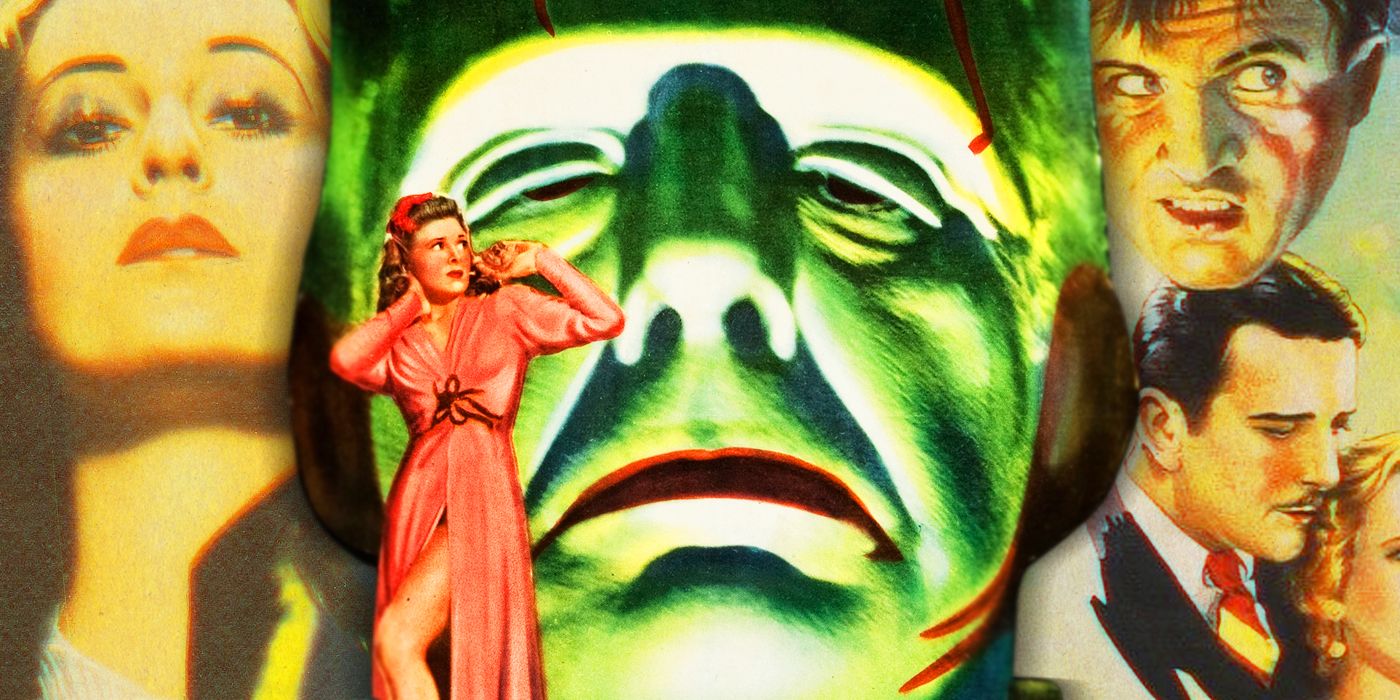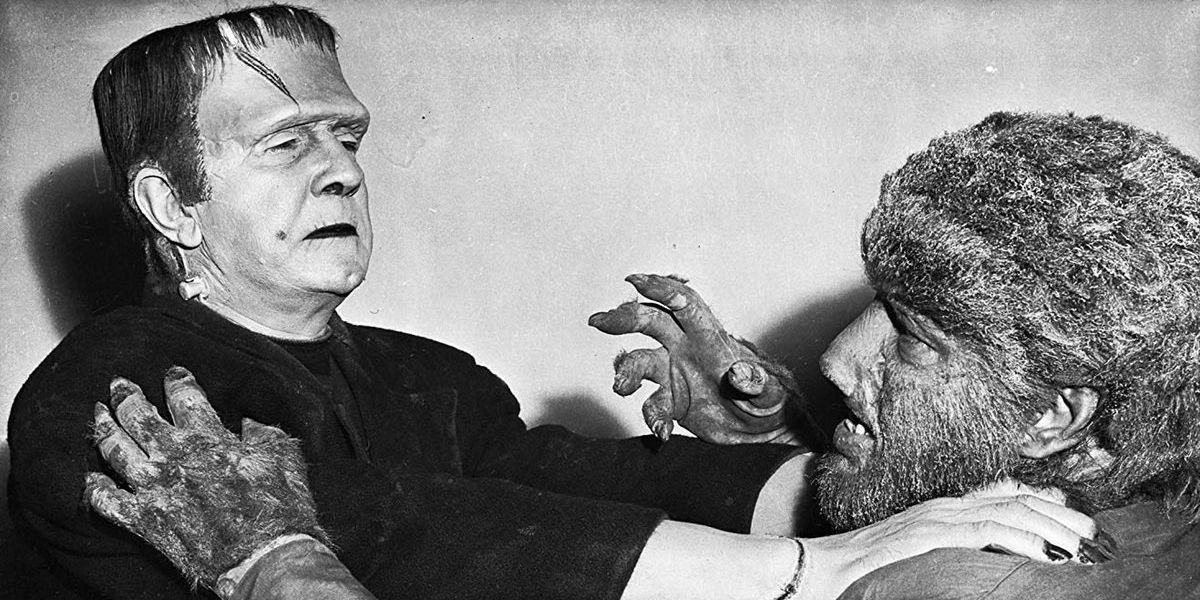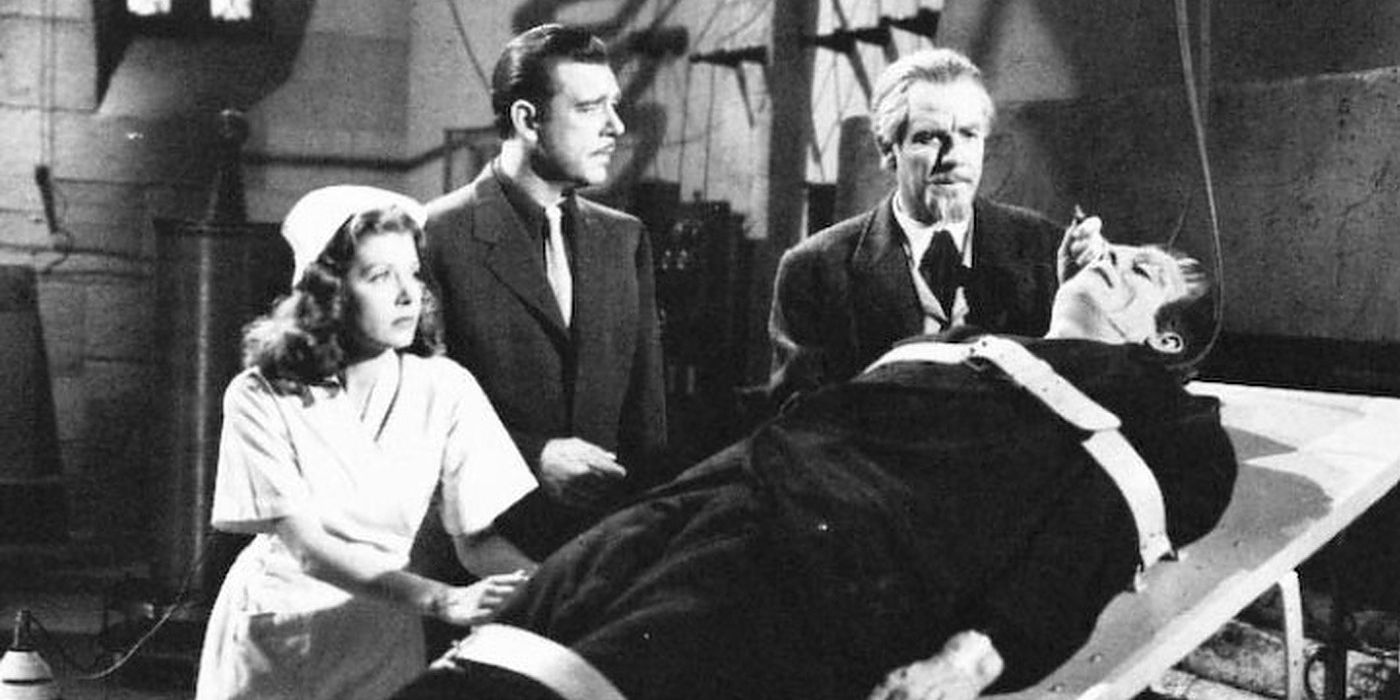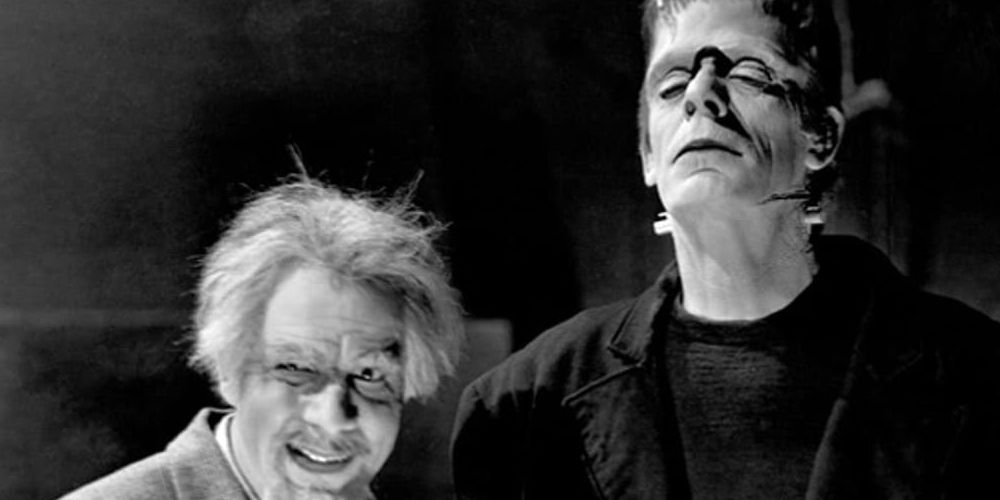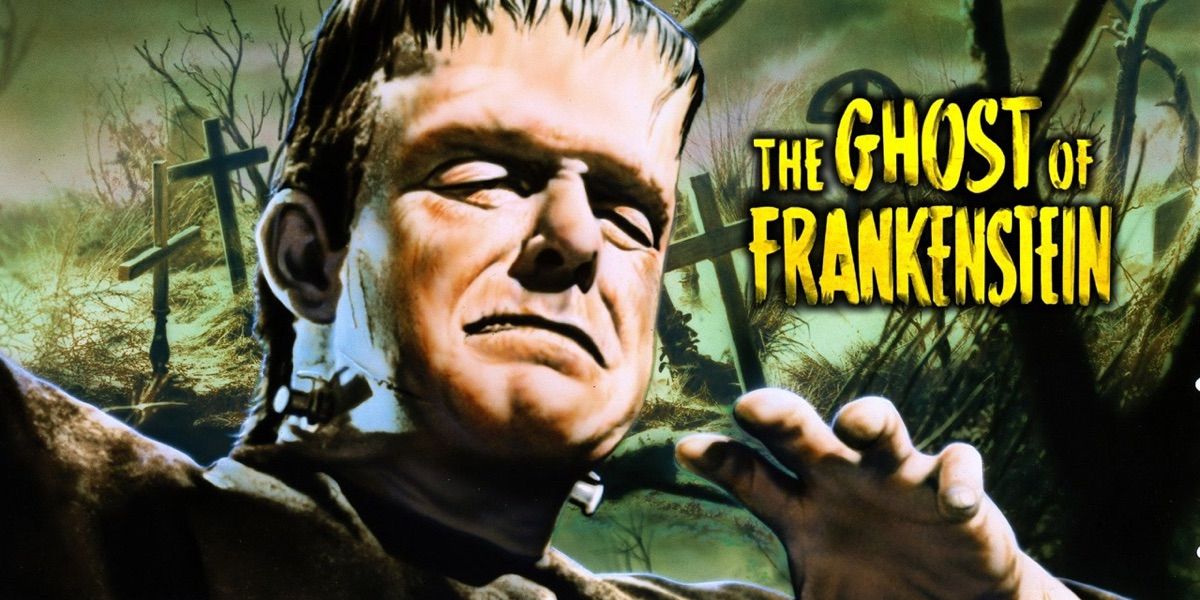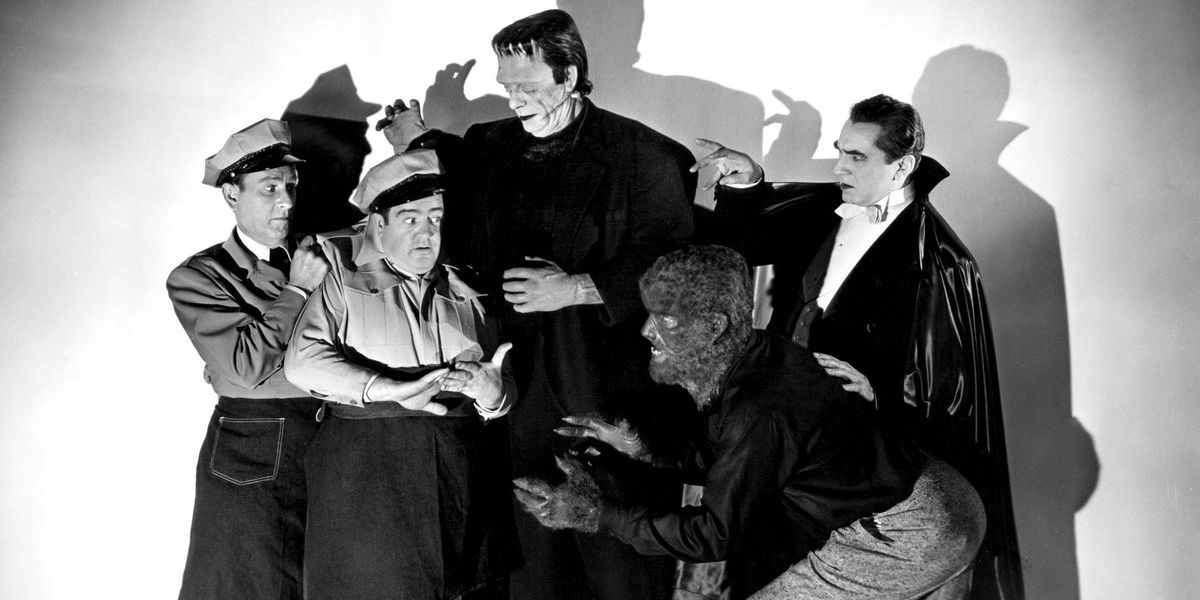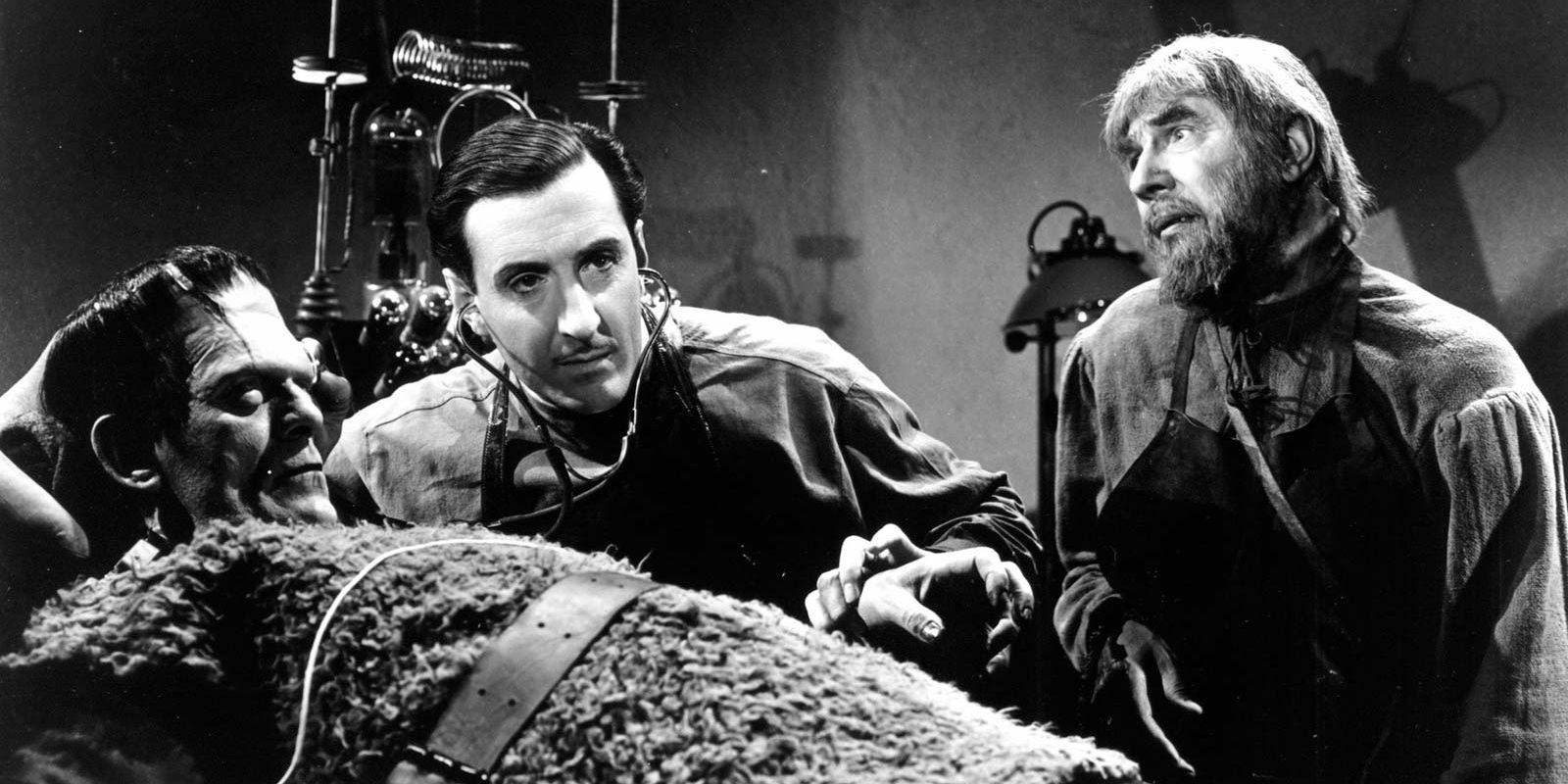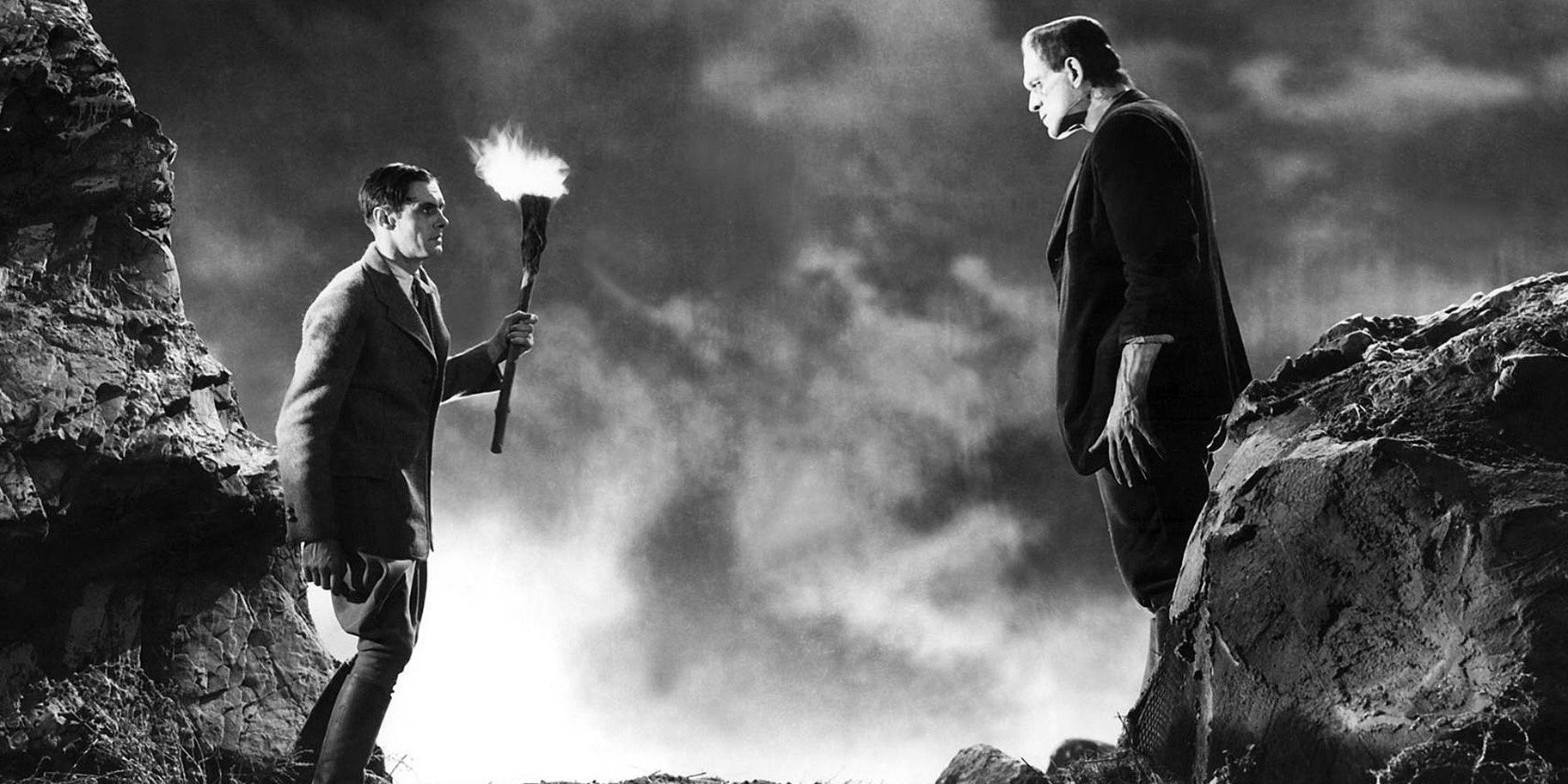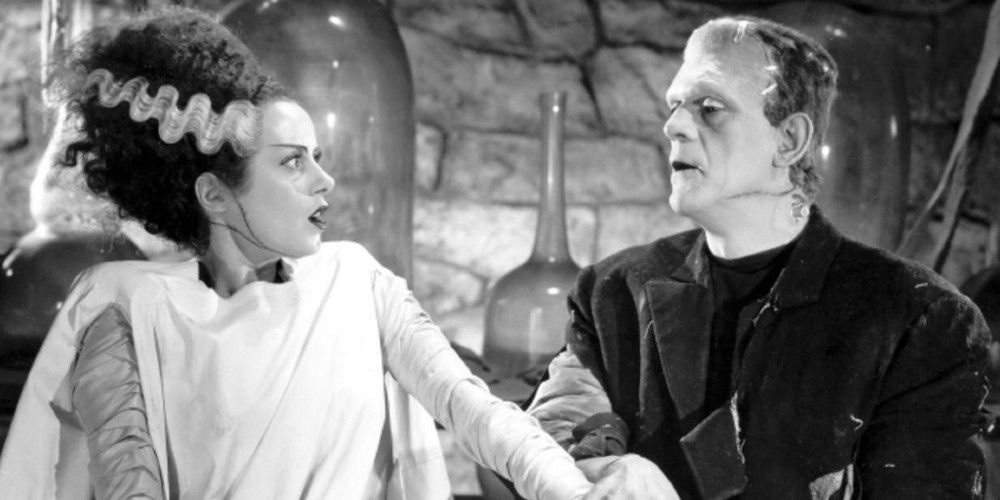90 years ago, Universal Pictures launched arguably the most influential horror movie franchise of all time with Frankenstein. Although the films mostly deviated from Mary Shelley's darker and more complex novel, the studio made their version of the story iconic in its own way. Throughout the 1930s and 1940s, the Frankenstein franchise evolved from genuinely terrifying, to B-movie schlock, to straight-up comedy, setting the template for several future horror franchises. Here is a look at how critics received each entry in the series from worst to best based on their Rotten Tomatoes and Metacritic score.
8) Frankenstein Meets the Wolf Man - 25 Percent
The worst-received Universal Frankenstein movie by far was Frankenstein Meets the Wolfman, The Creature's first crossover with a fellow Universal Monster. Despite the potential for an interesting clash of famous horror icons, the movie devolves into an incoherent mess. Bela Lugosi received poor reviews for his performance as The Creature because the angle about his character being blind was cut after filming, thus his character's actions are confusing. Michael W. Phillips Jr. from Goatdog's Movies summed up why the film was a mess, saying, "It starts off really well, stalls a little toward the middle, goes bonkers for one really odd musical number and then derails completely at the end."
7) The House of Frankenstein - 55 Percent
Boris Karloff returns to the franchise, this time playing Dr. Gustav Niemann and helps improve House of Frankenstein from Frankenstein Meets The Wolfman. Karloff's doctor escapes from prison and brings back Frankenstein's Monster (Glenn Strange), Dracula and the Wolfman to bring down those who wronged him. The film's odd pacing is one of many flaws that keeps it from recapturing the series' former glory. However, critic Dennis Schwartz complimented the film, writing, "The horror story makes absolutely no sense, but it is so nutty that it makes for a diverting watch."
6) House of Dracula - 56 Percent
Although Dracula's name is in the title, it's very much a Frankenstein's Monster movie as well. The first half of the film has The Count attempt to reform his wicked ways, but inevitably the fellow Universal Monsters have to return, and The Creature is given another lazy resurrection. The most interesting storyline of these past couple Frankenstein sequels is actually Larry Talbot's struggles with being the Wolf Man, and the audience's patience pays off as he's finally cured in the end. Ken Hanke from Mountain Xpress called it, "A lot of fun and an OK end to the studio's glory days."
5) The Ghost of Frankenstein - 75 Percent
Lon Chaney Jr., best known as the Wolf Man, respectably fills in Boris Karloff's shoes as The Creature in this follow-up to Son of Frankenstein. Just like Son, The Monster is outshined by Lugosi's Ygor, who gives another riveting performance. This time Ygor finds another son of Frankenstein, hoping to merge his brain with The Monster's body. Tim Brayton from Agony & Ecstasy wrote a positive review, saying, "It gets the job done with admirable efficiency, no excess of imagination, and all in a compact 67-minute frame, and you really wouldn't want it to be any longer than that."
4) Abbott and Costello Meet Frankenstein - 89 Percent
Most long-running franchises that jumped the shark go out on a whimper, but in Frankenstein's case, the classic franchise actually went out on a high note with the beloved horror-comedy Abbott and Costello Meet Frankenstein. One of the film's highlights is Lugosi finally making his cinematic return as Dracula in this more comedic film. Jeffrey M. Anderson from Combustible Celluloid credited the film as "ridiculous, of course, but the combination of classic monsters, dizzy sets and some of Bud and Lou's funniest bits make it a keeper."
3) Son of Frankenstein - 91 Percent
Boris Karloff's third and final performance as Frankenstein's Monster may not have the iconic status of the first two movies, but it is still a gripping film to watch and essential viewing for fans of the franchise. This time Baron Wolf von Frankenstein, son of Victor, reanimates The Creature in an attempt to restore his family name. As good as Karloff is, the real star of Son of Frankenstein is Lugosi as The Monster's friend, Ygor, in a performance that is just as good if not better than his famous portrayal of Dracula. Dave Kehr from the Chicago Reader called the film "A strangely literary and leisurely monster movie, laced with amusing gothic doodles."
2) Frankenstein - 95.5 Percent
Although a few silent movies were made based on Mary Shelley's legendary novel before Universal's first Frankenstein movie, the 1931 film brought the story to the forefront of pop culture lore. Inspired by the international horror films of the past decade, director James Whale created a thrilling horror experience thanks to great sets, camerawork, performances and makeup. Nine full decades later and movie fans can still see traces of Frankenstein's influence in modern horror. Elliot Stein from The Village Voice commended Frankenstein as "The most influential horror film ever made, this stark and stylish work has a weird fairytale beauty."
1) The Bride of Frankenstein - 97.5 Percent
Both Frankenstein and The Bride of Frankenstein have a perfect score on Rotten Tomatoes, but the sequel wins the tiebreaker for having a higher rating on Metacritic. Anyone who wonders why some horror franchises get an endless amount of sequels can look no further than The Bride of Frankenstein. Bride picks up where the original left off and even includes more scenes from Mary Shelley's novel, with Shelley appearing in the prologue -- performed by the same actor who played the Bride. Karloff's Creature gets more speaking lines and is the most sympathetic character in the film, only wishing to have a companion. Despite only a few minutes of screen time, the titular Bride is one of horror's most iconic women and left audiences wanting more. Roger Ebert praised Bride as "satirical, exciting, funny and an influential masterpiece of art direction."

